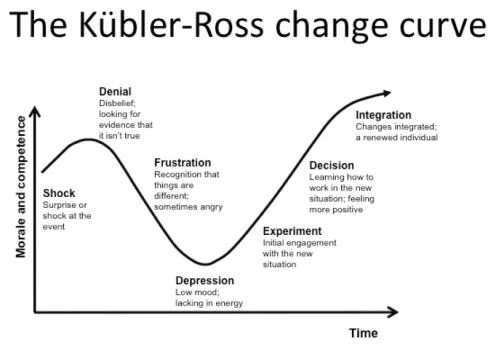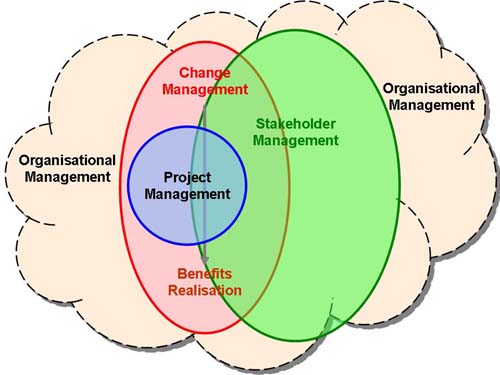Is the reason so many change initiatives fail an excessive focus on the ‘technical benefits’ and future value? Some of the lessons from the Brexit campaign would suggest ‘YES’!
Before people will buy into a new opportunity (the ‘change’) it helps if they are unhappy with the status quo. If this unhappiness can be magnified the willingness to embrace an uncertain future can be increased. The Brexit ‘Leave campaign’ is an extreme example of creating this desire. Most of the focus of ‘Leave campaign’ seems to have been tailored towards raising the level of unhappiness with the status quo. A few key examples:
EU bureaucracy – it exists and it is a significant burden; by simply focusing on the ‘perceived pain’ (most electors have very little contact with the regulations) a desire to leave was generated. The counter points carefully ignored include:
- If the UK leaves it will need its own regulations for public health and safety
- Firms that want to export to Europe will have more bureaucracy to deal with, complying with both the UK rules and the EU rules (the alternative is to cut off 50% of your export market).
EU bureaucrats – the unelected and unaccountable masses in Brussels! This ignores the fact UK bureaucrats are unelected and both sets are accountable to their respective parliaments. However, the perception of lack of control and accountability was significant despite the fact 99% of the UK electors have no control over UK bureaucrats.
Immigration and Islam. ‘Taking control of UK borders’ seemed to be the biggest factor in the debate. It’s a nice idea that ignores history:
- The vast majority of Islamic migrants in the UK arrived before the UK joined the EU (or these days their parents arrived…). Until the 1960s Commonwealth citizens had UK passports and a right of residence in the UK.
- The EU is less than 5% Islamic.
- Freedom to work in the EU is a two-way process – the right to work and access to workers is important (and has virtually nothing to do with ‘immigration’).
Trade deals. Negotiating ‘trade deals’ to the benefit of the UK….. Ignoring the fact that any trade deal requires concessions and most take 5 to 10 years to negotiate. The ‘other party’ has to see a significant benefit.
Lessons from Brexit!
The positive lesson for change proponents is to spend more time on creating the desire for change. Most people in an organisation can ‘live with’ the status quo (but are aware of the problems and pain points), and are likely to be frightened with the perceived threats and challenges of the proposed change. Digging into the ‘pain points’ and offering constructive solutions may provide a powerful basis for building the desire for change. This is a very different approach to starting with an emphasis on the future benefits and opportunities the proposed change will bring.
The processes needed to sell the change to the organisation’s executive decision makers have to focus on benefits and value, but Brexit suggests a different approach may be beneficial when approaching the people within the organisation affected by the change.
Ethics matter! “You can fool all the people some of the time and some of the people all the time, but you cannot fool all the people all the time[1]”. What has yet to wash out in the Brexit aftermath is the lack of ethics and in some cases blatant dishonesty of the ‘Leave campaign’. I suspect there will be a major backlash against the people responsible for the ‘Leave campaign’ as people become aware of the exaggerations and deceptions. The current crash in the Pound and the almost inevitable recession it will cause were predicted. What was missed from the UK debate, and is essential in an organisational change initiative, is recognition of the challenges of the change – offset by the vision of future benefits. Ethics are not negotiable!
Simple language is important. Creating and emotional commitment to change requires the use of language that is easy to understand. The ‘Leave vision’ was simplistic rather than simple but it worked – ‘make Britain great again’ and ‘regain sovereignty’ sound appealing[2] but lack substance. The difference between the Brexit ‘con job’ and ‘informed consent’ is understanding what you are committing to, both the vision and the journey. But the language of projects, engineers and technicians used to define and develop a change proposal is frequently inappropriate for effective communication to the rest of the people affected. This is discussed in my paper: Understanding Design – The challenge of informed consent.
Summary
The Brexit campaign is an extreme example of creating a desire for change based on developing a level of dissatisfaction with the status quo. This tactic can be a very useful early phase in the communication processes around a proposed organisational change – dissatisfaction with the current state is a powerful driver to accept change. The flip side, also observable in the Brexit campaign, is that ethics and honesty matter. Democracy requires informed consent! We have no idea what the consequences in the UK would have been if the ‘Leave campaign’ had been more ethical and spelt out a future; but judging from the reaction of many, large numbers of people now seem to feel conned by the ‘leave’ campaign.
In an organisational context, this loss of trust will be disastrous. However, the fact the ‘Leave campaign’ could persuade a majority in the UK to vote in favour of an uncertain future that will reduce living standards and increase costs in the short-term (at least) without even bothering to paint a clear vision of their proposed future (or how to get there) shows how powerful the techniques discussed above can be.
The challenge for ethical organisational change is to harness the power without resorting to the deceptions.
[1] Adapted from: “Traité de la Vérité de la Religion Chrétienne” by Jacques Abbadie (1684, Chapter 2)
[2] Britain was ‘Great’ in the period leading up to WW1 based on its Empire (not the Commonwealth); it is and has been a sovereign nation since 1066…… Neither of these concepts was fleshed out possibly allowing 1000s of different self-made visions to fill the space. Potentially a good tactic but fraught with problems going forward.









